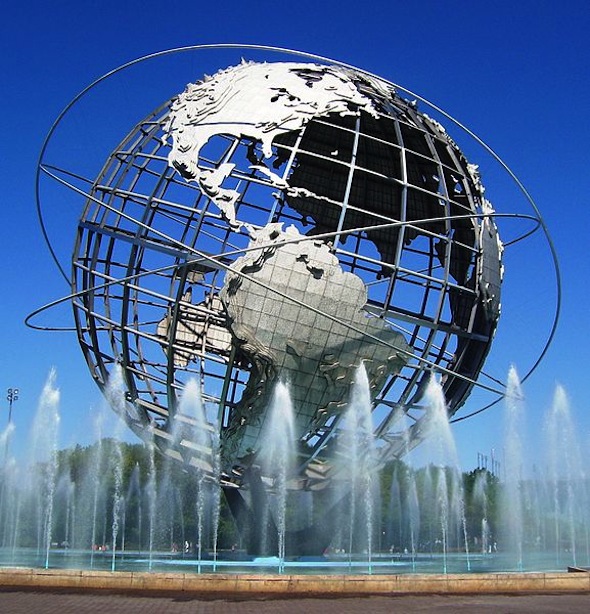Did you know that back in 1939 a group of retired New York City policemen started the World’s Fair in order to boost people’s spirits after the Great Depression? After four years of planning, the fair opened on April 30, 1939 on a plot of land in Queens that was formerly used as an ash dump and is now known as Flushing Meadow Park. I took sailing lessons there back in the day. It’s fascinating to me to read about the international dining offered at that fair, 73 years ago.
The World’s Fair celebrated invention and international cooperation. The fair grounds were filled with exhibits that showcased developments in food science, and also restaurants where visitors could taste dishes from all around the world.
American
There were 40 sit-down restaurants scattered across the grounds, as well as 261 individual refreshment stands serving burgers, franks, sodas, and dairy products for 10 cents or less. It may seen like the SAD (Standard American Diet) but I would imagine that the meat and dairy were all from pastured animals that were not shot up with hormones and antibiotics.
Swiss
The Swiss pavilion had two very popular restaurants. One was an outdoor restaurant that served Swiss and American dishes served by waitresses in peasant garb. The other was The Chalet, which offered refined Swiss cuisine including the fried chicken, liver, and bacon dish known as brochettes Lucernoise. These are traditional foods.
French
The French pavilion had an upscale restaurant called Le Restaurant Francais. In a dining room that overlooked the Lagoon of Nations, it served several opulent French dishes, including foie gras, crepes Suzette, and a duckling for two. As controversial as it is today, foie gras is certainly a traditional dish of the French.
Brazil
The Brazilian pavilion served coffee and traditional dishes like chicken broth with rice and fish cooked in palm oil. Something we are teaching people to do today.
Romania
The Romanian pavilion also had an upscale restaurant called the Romanian House that offered an extensive wine list as well as caviar shipped by plane. A fish egg by any other name would not be as …. salty.
Finland
The Finland pavilion had a restaurant that served reindeer steak, salmon casserole, and rolled beef with vegetables. Wow reindeer steak.
Soviet Union
The Soviet pavilion featured another upscale restaurant. The menu that included shashlik, borscht, and several types of vodka. I guess you can’t say Soviet without expecting vodka with your borscht.
Poland
The restaurant in the Polish pavilion offered guests cold fruit soup, calf brains a ala Polonaise, babka, zakaski, and honey wine. I wonder if honey wine is like mead.
Clearly there were a lot of fancy restaurants at the World’s Fair. Some journalists opinioned that the food was too expensive. After hearing this, a survey of the restaurants in the international zone was conducted. It was estimated that full meals at these establishments cost about 43 cents on average, which was a standard price for a sit-down meal at a moderately priced Manhattan restaurant.
Well those were the days, were they not? Great traditional food at amazing prices!














